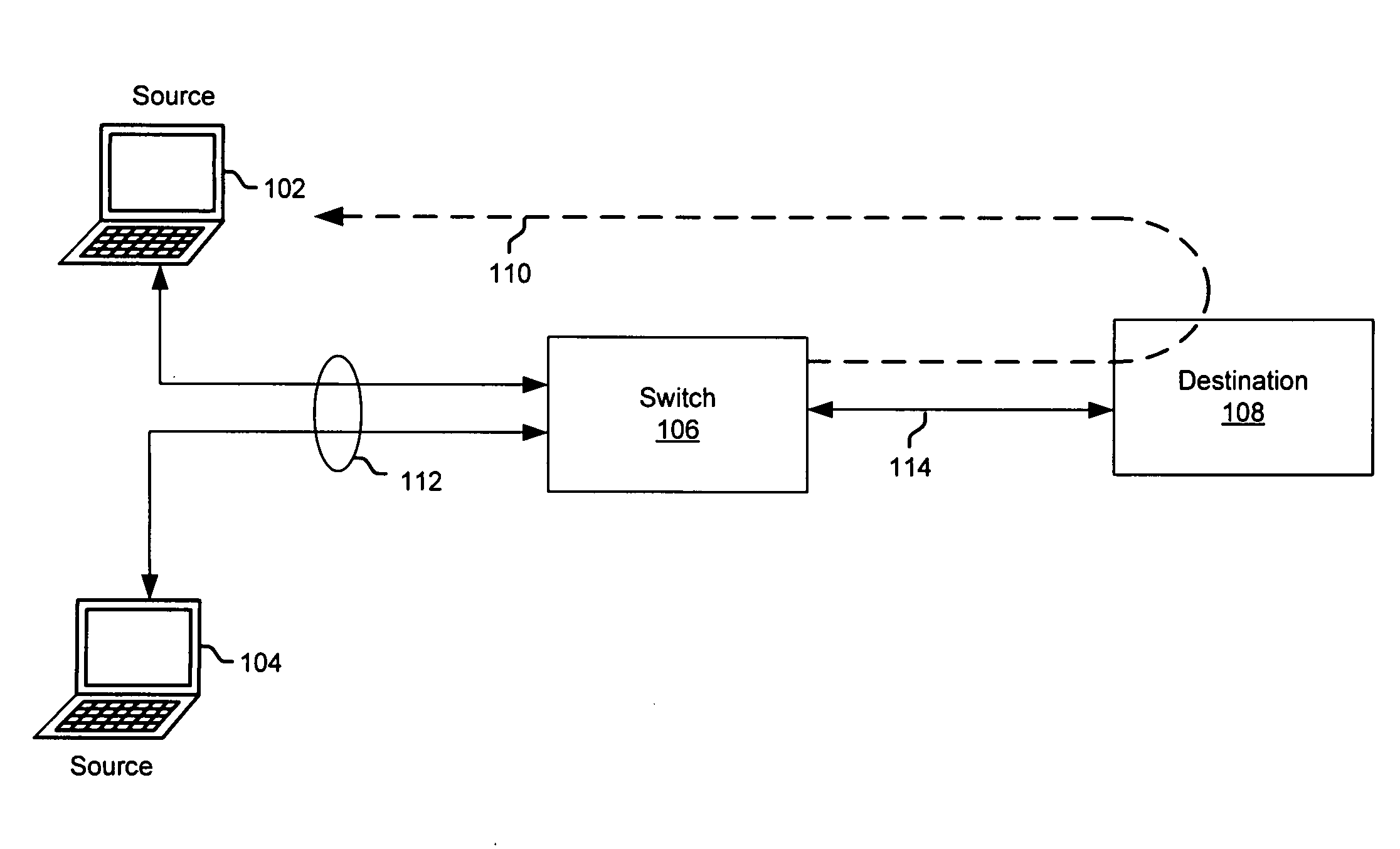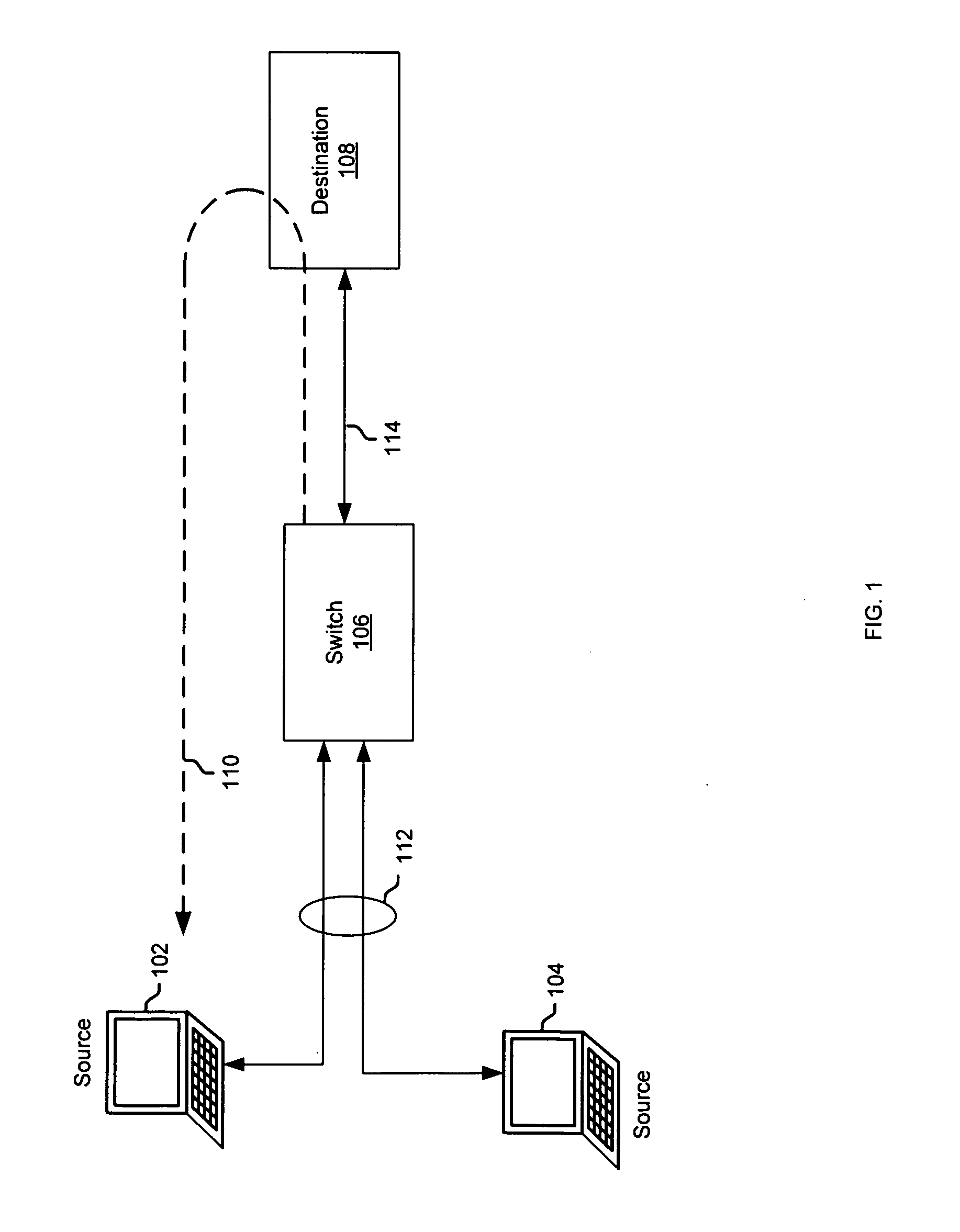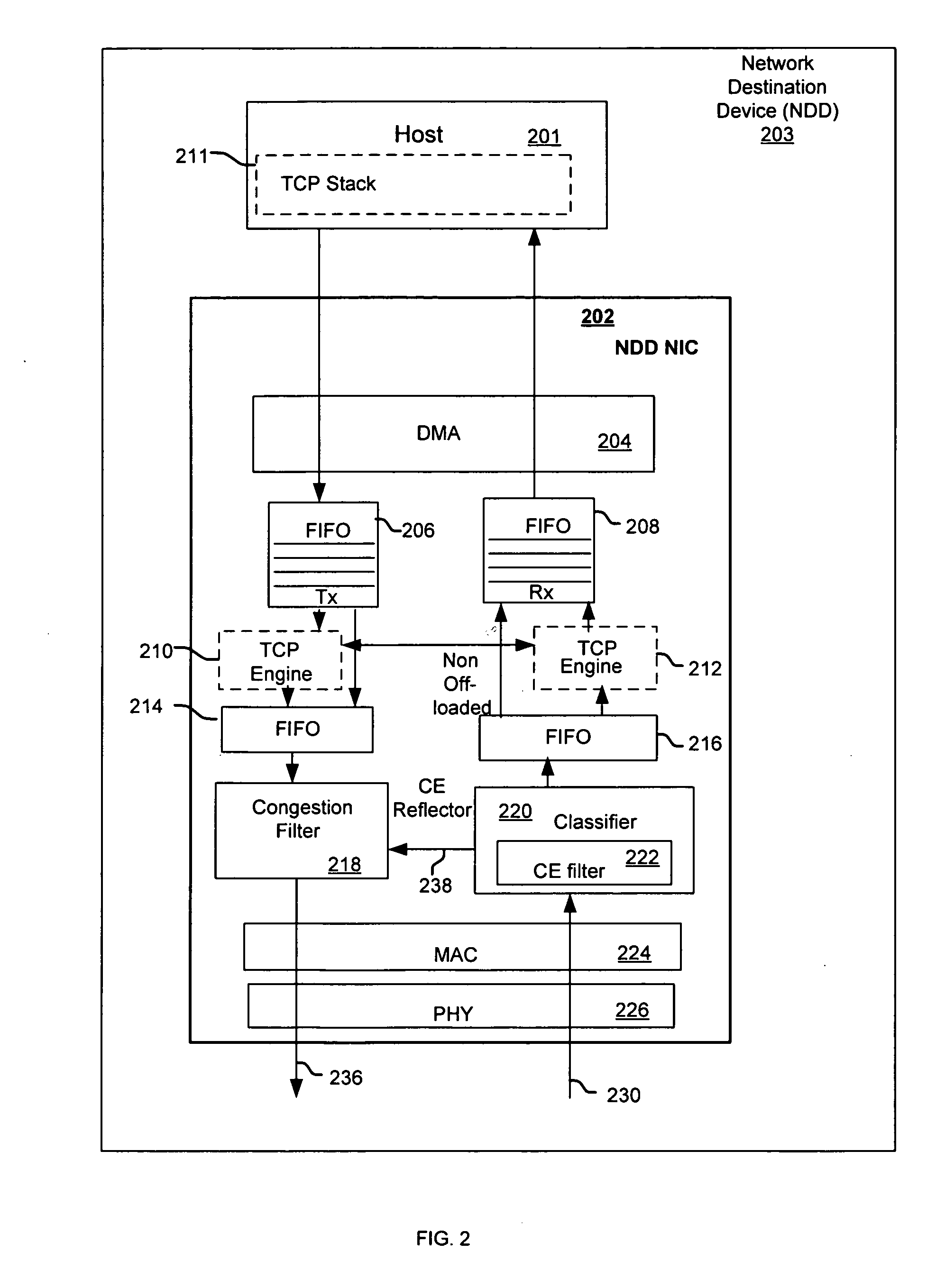Method and system for reducing end station latency in response to network congestion
a network congestion and end station technology, applied in the field of communication networks, can solve the problems of routers and switches dropping frames, switches and routers have limited resources to store, congestion may occur, etc., and achieve the effect of reducing end station latency
- Summary
- Abstract
- Description
- Claims
- Application Information
AI Technical Summary
Benefits of technology
Problems solved by technology
Method used
Image
Examples
Embodiment Construction
[0019] Certain embodiments of the invention may be found in a method and system for reducing end station latency in response to network congestion. Congestion indication indicating network traffic congestion may be communicated from a switching device to a network source device and / or to a network destination device. In response to the received congestion indication, a network destination device may set congestion indication flags, such as explicit congestion notification (ECN)-Echo flags, in network frames being sent to the network source device on the same flow, such as TCP ACK frames, in instances when L3 / L4 signaling is used. The network frames with set congestion indication flags may be communicated to a network source device. Latency may then be reduced within the network source device by taking an immediate action of reducing the rate or rate limiting the transmission of to-be transmitted network frames that are part of the TCP flow or Class of Service signaled in hardware, b...
PUM
 Login to View More
Login to View More Abstract
Description
Claims
Application Information
 Login to View More
Login to View More - R&D
- Intellectual Property
- Life Sciences
- Materials
- Tech Scout
- Unparalleled Data Quality
- Higher Quality Content
- 60% Fewer Hallucinations
Browse by: Latest US Patents, China's latest patents, Technical Efficacy Thesaurus, Application Domain, Technology Topic, Popular Technical Reports.
© 2025 PatSnap. All rights reserved.Legal|Privacy policy|Modern Slavery Act Transparency Statement|Sitemap|About US| Contact US: help@patsnap.com



